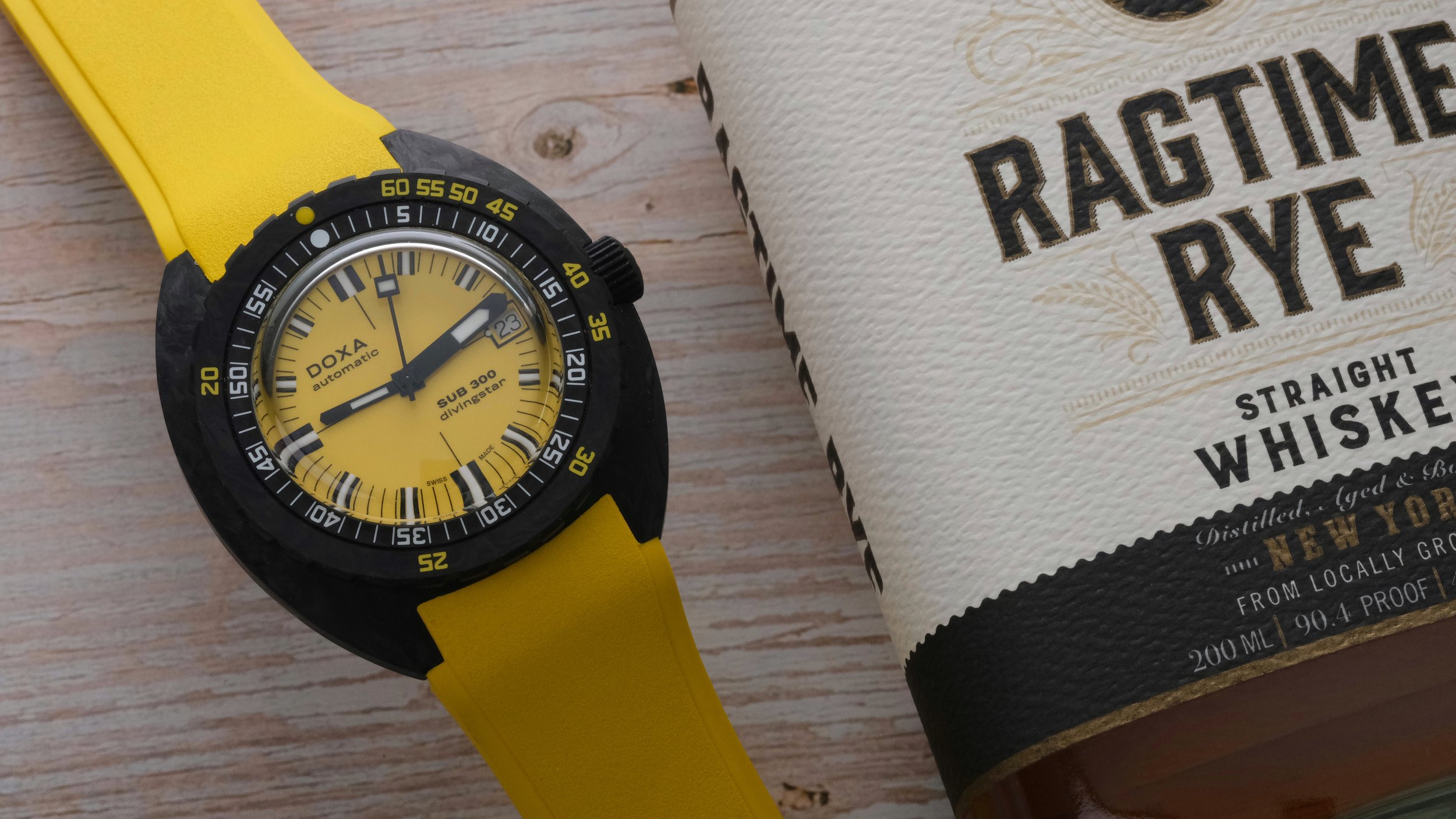Hands-On Review of the DOXA Sub 300 Carbon Divingstar
Besides Rolex and Blancpain, DOXA is probably the brand with the most diving history. While the Blancpain Fifty Fathoms was the first dive watch, released in 1953. The DOXA Sub 300 was released in 1967. Shortly after, in 1968, the watch became an instant hit when Jacques-Yves Cousteau and the crew of the Calypso were seen wearing the orange dial variation on television in the documentary “The Undersea World of Jacques Cousteau” watched by millions of viewers weekly.
Clearly, the Sub 300 is a serious dive watch. And in the years since the original release, DOXA has stayed steadfastly close to the original design, including the orange dial they are known for. That is not to say that DOXA hasn’t evolved since 1967. In addition to releasing other collections (including the Sub 200, Sub 200 Chronograph, Sub 600 and even the Sub 1500), DOXA has expanded within the Sub 300 line.
Beyond the multitude of different dial colors and limited editions DOXA now offers, my favorite model from the brand is probably the Sub 300 Carbon. I was present at DOXA’s recent New York City event unveiling the limited edition Sub 300T Clive Cussler. While I appreciated the limited edition piece for its style and history, what really drew me in were a few of the attendees wearing the Sub 300 Carbon. It was at this point that I decided I really wanted to get my hands on one of their carbon watches for my own interest and to review it here.
The first thing you notice about the Sub 300 Carbon is that, even with its light-forged carbon case and bezel, the watch is strikingly similar to the current Sub 300 and even the first variation released in 1967. While the case sits at a not-so-vintage feeling 42.5mm by 45mm (lug to lug), it wears both larger and smaller at the same time (I know that’s a bit of an oxymoron). It wears larger because the case it tonneau-shaped, and therefore has more surface area on the wrist. However, DOXA’s unique case construction with the dial and bezel much smaller than the rest of the case makes it also seem smaller and more wearable. On top of that, the recessed tonneau portion of the case makes the watch sit closer to the wrist, aiding its wearability on even smaller of wrists.
While the tonneau case makes the watch feel pretty thin the dial and domed crystal bring the case to an overall thickness of 13mm. But again, the watch does feel 13mm thick because of DOXA’s unique case design. And I am always a sucker for a domed crystal, especially on a dive watch paying homage to a predecessor that most certainly had a domed crystal.
The watch wears very comfortably, due to the lightness of the carbon case (the caseback is actually made of titanium). In fact, the watch only ways 87 grams and about half of that is the rubber strap and unique deployant buckle. Speaking of the buckle, it is pretty hefty and is designed in a way that forces you to cut down the strap to size it correctly. This makes the watch sleeker and I think the deployant is more comfortable than most, but does have the downside of not allowing large adjustments to the strap. The deployant does allow for a large micro-adjustment, but I find it not to be the most attractive micro-adjustment. While one button on the deployant opens the strap, the other slides out the micro-adjustment, which is very visible when employed.
Like most of DOXA’s collection, the Sub 300 Carbon is available in a variety of different color dials (7 to be exact). I appreciate DOXA keeping the number of collections they offer to a minimum while instead offering variety within a given collection. I reviewed the Divingstar, which just means it has a yellow dial. The yellow dial, tonneau case, and lightweight almost gave me the feel of wearing a Richard Mille, albeit at a much lower price point and without the skeletonized dial and complications. I also got the chance to see the turquoise dial “Aquamarine” which I am a big fan of as well. If you want something a little more traditionally DOXA, the “Professional” comes with the brand’s signature orange dial. All are fine options if you ask me.
While the Divingstar I reviewed had a yellow rubber strap, it is also available with a black rubber strap. The Strap on the Sub 300 Carbon, as well as all DOXA’s, is top-notch. It is comfortable and clearly made of high-quality FKM rubber, instead of low-quality silicon as is often the case with watches these days. Until you have the chance to directly compare FKM rubber straps to silicon straps, it’s hard to really understand how much better an FKM rubber strap actually is.
Like all Sub 300 models, the Carbon is water resistant to 300 meters (about 1,000 feet). This means that the watch is an actual functional dive watch. I wouldn’t expect anything less from a brand with DOXA’s heritage in the dive community. While I am not a diver myself, I think I would choose this watch over a Submariner or Fifty Fathoms if I were going out on a dive.
Overall, I enjoyed my time with the Sub 300 Carbon. It’s interesting to see the brand take its legendary watch in a modern, innovative direction. Dare I say that I prefer the Sub 300 Carbon to the Sub 300. It can be hard for brands that are so well known for a single watch to produce something new, but DOXA hit it out of the park. Price for the DOXA Sub 300 Carbon is $3,890 USD. You can purchase it directly on DOXA’s website.








